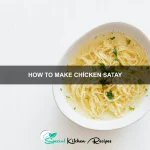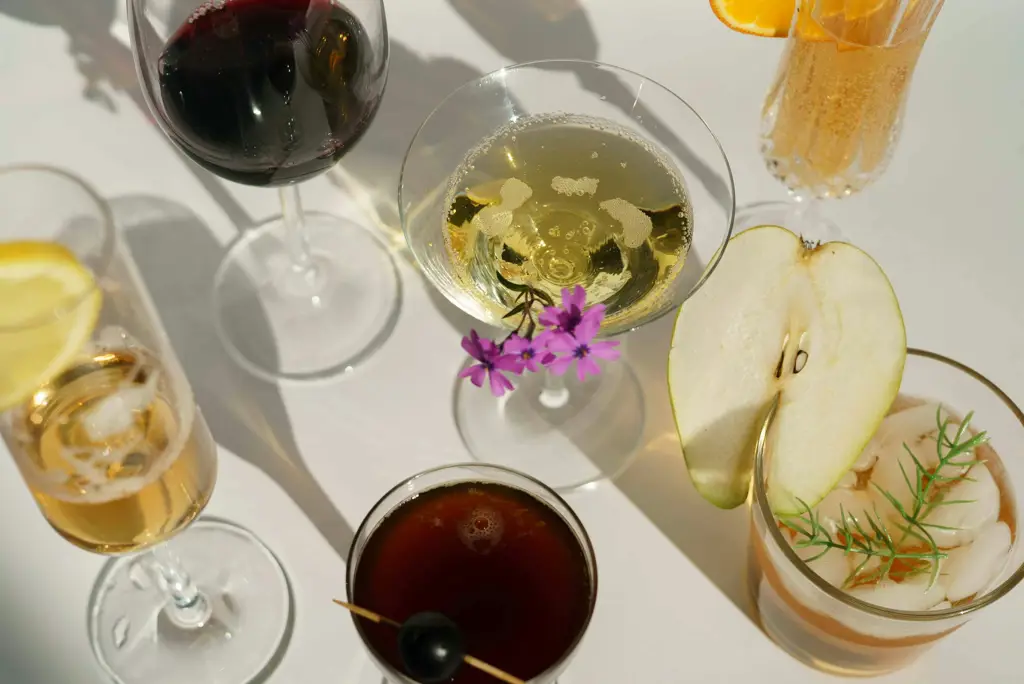Roasted garlic shrimp, a seemingly simple dish, boasts a surprisingly rich history interwoven with the culinary traditions of the Mediterranean. While pinpointing a precise origin is difficult, its core components – garlic and shrimp – have been staples in coastal cuisines for millennia. Ancient Roman texts refer to the use of both ingredients, suggesting early forms of this dish may have existed centuries ago. The combination likely evolved organically, with different cultures adapting the preparation based on their available resources and culinary preferences. The roasting method itself, contributing to the shrimp’s succulent texture and the garlic’s mellow sweetness, likely gained prominence with the widespread adoption of ovens.
The popularity of shrimp globally is undeniable. Globally, shrimp production exceeds 5 million metric tons annually, making it one of the most consumed seafoods worldwide. This high demand has led to diverse culinary interpretations, with roasted garlic shrimp finding a place in various cuisines. In Italy, for example, similar preparations often feature garlic, olive oil, and herbs, reflecting the country’s emphasis on fresh ingredients and simple cooking techniques. Spanish and Greek variations might incorporate different spices or citrus elements, showcasing the regional adaptability of this fundamentally straightforward dish. The accessibility of the ingredients and the relative ease of preparation have contributed to its widespread appeal.
Beyond its culinary significance, roasted garlic shrimp holds cultural importance as a symbol of coastal living and fresh, seasonal ingredients. The dish is often associated with summer gatherings and celebrations, appearing frequently on menus of seaside restaurants and featured in countless family recipes passed down through generations. The inherent simplicity of the recipe allows for creative variations, making it a perfect canvas for personal culinary expression. Whether served as an appetizer, a main course, or a flavorful addition to pasta, roasted garlic shrimp’s enduring appeal lies in its deliciousness, accessibility, and ability to transport you to a sun-drenched coastline with each bite.
Ingredients and Measurements
This recipe for Roasted Garlic Shrimp yields approximately 4 servings. Accurate measurements are crucial for achieving the perfect balance of flavors and textures. We recommend using a kitchen scale for the most precise results, especially when measuring the shrimp and garlic.
Shrimp: 1 pound (450g) large shrimp, peeled and deveined. Important: Ensure the shrimp are consistently sized for even cooking. If using frozen shrimp, thaw them completely and pat them dry with paper towels before roasting. Leaving excess moisture on the shrimp will lead to steaming instead of roasting and result in a less flavorful dish.
Garlic: 1 whole head of garlic. Recommendation: Use a head of garlic that feels firm and heavy for its size, indicating freshness and intense flavor. Roasting the whole head brings out a deep sweetness that complements the shrimp beautifully.
Olive Oil: 1/4 cup (60ml) extra virgin olive oil. Tip: Use a high-quality extra virgin olive oil, as its flavor will significantly impact the final dish. A fruity olive oil will complement the garlic and shrimp exceptionally well.
Lemon: 1 large lemon, zested and juiced. Note: Separating the zest from the juice allows for precise control over the lemon’s flavor profile. The zest adds brightness and aroma, while the juice contributes acidity to balance the richness of the shrimp and olive oil.
Fresh Herbs: 2 tablespoons chopped fresh parsley and 1 tablespoon chopped fresh oregano. Professional Tip: Using fresh herbs elevates the dish significantly compared to dried herbs. If fresh herbs aren’t available, substitute with 1 teaspoon of dried oregano and 1 teaspoon of dried parsley.
Seasoning: 1 teaspoon salt, 1/2 teaspoon black pepper, and 1/4 teaspoon red pepper flakes (optional). Adjust to Taste: Adjust the amount of salt, pepper, and red pepper flakes to your preference. Start with the suggested amounts and add more to taste after the shrimp are cooked.
Other Ingredients (Optional): Consider adding 1/4 cup of cherry tomatoes or halved grape tomatoes for extra flavor and color. A sprinkle of flaky sea salt just before serving adds a beautiful touch and enhances the overall presentation.
Equipment List
Creating perfectly roasted garlic shrimp requires the right tools. While you might be able to improvise, having the correct equipment ensures even cooking and optimal flavor development. Here’s a detailed list of what you’ll need:
1. Roasting Pan: A 9×13 inch baking dish or a similar sized roasting pan is ideal. Avoid using a pan that’s too small, as this will overcrowd the shrimp and prevent even roasting. Overcrowding leads to steaming instead of roasting, resulting in mushy shrimp instead of the desired crispy texture. A dark-colored roasting pan is also preferable, as it absorbs and retains heat more effectively.
2. Garlic Press: A good quality garlic press is essential for efficiently mincing the garlic cloves. While you can chop garlic finely by hand, a press ensures a consistent texture, maximizing the garlic’s flavor infusion into the shrimp and oil. Avoid using a cheap press that leaves behind large garlic chunks.
3. Measuring Cups and Spoons: Accurate measurements are crucial for achieving the perfect balance of flavors. Invest in a set of reliable measuring cups and spoons, preferably stainless steel or plastic, for easy cleaning. Ensure your measuring tools are clean and dry before using them to avoid inaccurate measurements.
4. Whisk: A whisk is needed to thoroughly combine the olive oil, garlic, and seasonings before adding the shrimp. This ensures even coating and distribution of flavor. A balloon whisk is recommended, as its shape allows for efficient blending without clumping.
5. Large Bowl: You’ll need a large bowl to toss the shrimp in the garlic-herb mixture. Choose a bowl that’s large enough to comfortably hold all the shrimp without overcrowding, allowing for even coating. A stainless steel or glass bowl is preferable.
6. Tongs: Tongs are essential for gently turning the shrimp during roasting and for transferring the cooked shrimp to a serving dish. Avoid using metal utensils that might scratch your roasting pan. Silicone or wooden tongs are great alternatives.
7. Oven Thermometer (Optional but Recommended): An oven thermometer ensures your oven is at the correct temperature. Oven temperatures can fluctuate, and an accurate reading is crucial for achieving perfectly roasted shrimp. This is especially important if you have an older oven.
8. Serving Dish: Finally, you’ll need an attractive serving dish to present your delicious roasted garlic shrimp. Choose a dish that complements the dish and enhances its presentation.
Preparation of Garlic
Properly preparing the garlic is crucial for achieving the best flavor in your roasted garlic shrimp. We’ll be using a whole head of garlic, which yields a much more intense and mellow roasted flavor compared to using minced garlic from a jar. Start by selecting a firm, plump head of garlic with no soft or bruised cloves.
Begin by trimming the top of the garlic head. Using a sharp knife, carefully slice off about 1/4 inch from the top, exposing the tops of the cloves. Don’t cut too deeply; you just want to expose the cloves, not sever them completely from the base. You should see the green shoots at the center of each clove.
Next, drizzle approximately 2 tablespoons of olive oil over the exposed garlic cloves. Use a good quality extra virgin olive oil, as it will significantly impact the final flavor of your dish. Make sure to coat the cloves generously, ensuring that the oil gets into the crevices between the cloves. This will help them roast evenly and prevent them from drying out.
Now, season the garlic. A generous pinch of sea salt (approximately 1/2 teaspoon) and freshly cracked black pepper (about 1/4 teaspoon) will enhance the garlic’s natural sweetness. You can also add other seasonings at this stage, such as a pinch of dried oregano or thyme for an additional layer of flavor. Don’t be shy with the seasoning; the roasted garlic will absorb it beautifully.
Finally, wrap the garlic head tightly in aluminum foil. Ensure there are no gaps in the foil to prevent the garlic from drying out during roasting. This creates a small, self-contained oven for the garlic, allowing it to roast evenly and develop its signature soft, sweet, and caramelized flavor. The tightly sealed foil packet will also help to trap the moisture and aromas, resulting in a more flavorful final product.
Your prepared garlic is now ready for roasting. Follow the roasting instructions in the next section to achieve perfectly roasted garlic for your delicious shrimp dish. Remember, patience is key; the longer the garlic roasts, the softer and sweeter it will become.
Shrimp Preparation
Proper shrimp preparation is crucial for achieving perfectly roasted garlic shrimp. Start with 1 pound of large shrimp, peeled and deveined. You can purchase them pre-peeled and deveined for convenience, but if you’re doing it yourself, ensure you remove the shell completely, including the legs. The vein, a dark line running along the back, should also be removed. This is easily done with a small, sharp knife or by using the tip of a spoon to gently scoop it out.
Once peeled and deveined, rinse the shrimp thoroughly under cold running water. This step helps remove any residual impurities or grit. Pat them dry with paper towels; excess moisture will hinder browning during roasting. Leaving them damp will result in steaming rather than roasting, impacting the final texture and flavor.
For optimal flavor and even cooking, it’s important to ensure uniform size. If your shrimp are a mix of sizes, try to separate them into batches for roasting. Smaller shrimp will cook faster than larger ones, so roasting them together could result in overcooked smaller shrimp and undercooked larger ones. Aim for shrimp that are roughly the same size, within a quarter-inch of each other, to ensure even cooking.
Do not over-marinate the shrimp. While marinades add flavor, prolonged marinating can make the shrimp mushy. A simple marinade of olive oil, garlic, lemon juice, salt, and pepper for 15-20 minutes is sufficient. Anything longer risks over-tenderizing the shrimp. The goal is to enhance the natural flavor of the shrimp, not mask it.
Before roasting, inspect the shrimp one last time to ensure all shells and veins are removed. Any remaining shell fragments can create a tough texture. Proper preparation will significantly impact the final dish’s quality, producing succulent, flavorful shrimp that are perfectly cooked and visually appealing.
Finally, consider the arrangement on your baking sheet. Ensure the shrimp are in a single layer, not overlapping. This allows for even heat distribution and browning on all sides. Overcrowding will lead to steaming instead of roasting, resulting in less appealing shrimp.
Roasting Technique
Roasting garlic and shrimp together delivers a beautifully balanced dish, with the garlic’s sweetness complementing the shrimp’s delicate flavor. The key to success lies in a precise roasting technique that avoids burning the garlic while ensuring the shrimp cooks perfectly.
Begin by preparing your garlic. Take one whole head of garlic and cut off the top, exposing the cloves. Drizzle 1 tablespoon of olive oil over the cut surface and wrap the garlic head tightly in aluminum foil. This creates a steamy environment that softens the garlic cloves without browning them too much. Place the foil-wrapped garlic on a baking sheet.
Next, prepare the shrimp. For this recipe, we’ll use 1 pound of large shrimp, peeled and deveined. Pat them dry with paper towels; this is crucial for achieving a nice sear and preventing them from steaming instead of roasting. In a medium bowl, toss the shrimp with 2 tablespoons of olive oil, 1 teaspoon of salt, and 1/2 teaspoon of black pepper. Don’t overcrowd the pan; this will lower the temperature and result in steaming instead of roasting.
Preheat your oven to 400°F (200°C). Once preheated, place the prepared shrimp on the same baking sheet with the garlic, ensuring they are arranged in a single layer. Avoid overlapping the shrimp to ensure even cooking. Roast for 8-10 minutes, or until the shrimp are pink and opaque and the garlic is soft and easily squeezable. Cooking time may vary depending on the size of your shrimp and your oven; smaller shrimp will cook faster.
Important Note: Keep a close eye on the shrimp during the last few minutes of roasting. Overcooked shrimp will become tough and rubbery. Use a food thermometer to check the internal temperature if you’re unsure; it should reach 145°F (63°C). Once cooked, remove the baking sheet from the oven and let the shrimp rest for a couple of minutes before serving. This allows the juices to redistribute, resulting in more tender and flavorful shrimp.
For added flavor, consider adding other herbs and spices to the shrimp before roasting. Fresh rosemary, thyme, or a pinch of red pepper flakes can all enhance the dish. Experiment with different flavor combinations to find your perfect roasted garlic shrimp recipe!
Sauce Preparation (if applicable)
While roasted garlic shrimp is delicious on its own, a flavorful sauce can elevate the dish to a new level. This section outlines a few sauce options to complement your perfectly roasted shrimp.
Option 1: Classic Garlic Butter Sauce: This simple yet elegant sauce is a perfect match for the roasted garlic and shrimp. Melt 4 tablespoons (1/2 stick) of unsalted butter in a small saucepan over medium heat. Add 4 cloves of minced fresh garlic and cook for about 1 minute, or until fragrant, being careful not to burn the garlic. Stir in 2 tablespoons of chopped fresh parsley and 1 tablespoon of lemon juice. Season generously with salt and freshly ground black pepper to taste. For a richer flavor, whisk in 2 tablespoons of heavy cream at the end.
Option 2: Spicy Lemon-Garlic Sauce: For those who prefer a bit of a kick, this sauce adds a vibrant zing. Combine ¼ cup of olive oil, 2 tablespoons of lemon juice, 2 cloves of minced garlic, 1-2 teaspoons of red pepper flakes (adjust to your spice preference), and a pinch of salt and pepper in a small bowl. Whisk until well combined. Taste and adjust seasoning as needed. This sauce is best served warm, so you can gently heat it in a saucepan before drizzling over the shrimp.
Option 3: Creamy Pesto Sauce: A vibrant and flavorful pesto sauce adds a Mediterranean twist to the dish. Use ½ cup of store-bought or homemade pesto. For a homemade option, combine 2 cups of fresh basil leaves, 1/2 cup of grated Parmesan cheese, 1/4 cup of pine nuts, 2 cloves of garlic, and 1/2 cup of olive oil in a food processor and blend until smooth. If the sauce is too thick, add a tablespoon or two of water to thin it out. Gently warm the pesto sauce before serving to enhance its flavor.
Important Considerations:
- Taste and adjust seasoning: Always taste your sauce before serving and adjust the salt, pepper, and other seasonings to your preference.
- Don’t overcook the garlic: Burning the garlic will result in a bitter taste. Cook it gently until fragrant.
- Fresh herbs make a difference: Using fresh herbs will significantly improve the flavor of your sauce.
- Serve immediately: For the best flavor and texture, serve the sauce immediately after preparation.
Remember to choose the sauce that best complements your personal taste and the overall flavor profile of your meal.
Recommendations
For the best flavor, use high-quality shrimp. Look for firm, evenly colored shrimp with a fresh ocean scent. Avoid shrimp with a strong ammonia smell, which indicates spoilage. Properly thawing frozen shrimp is crucial; gently thaw them in the refrigerator overnight or use the defrost setting on your microwave. Pre-cooked shrimp will require less cooking time, so adjust accordingly.
Serving suggestions are plentiful! This Roasted Garlic Shrimp is incredibly versatile. Serve it as an appetizer with crusty bread for dipping in the flavorful garlic butter sauce. It’s also perfect as a main course over pasta (linguine or spaghetti work well), rice, quinoa, or even a bed of greens for a lighter option. Grilled vegetables, like zucchini and bell peppers, make a beautiful and healthy addition.
To maximize the deliciousness, serve immediately after roasting. The shrimp are best enjoyed when hot and the garlic butter is still bubbly. However, leftovers can be stored properly. Allow the shrimp to cool completely before transferring them to an airtight container in the refrigerator. Store them for up to 3 days. Reheat gently in a pan or microwave, avoiding overcooking which can make them rubbery.
Complementary dishes can elevate your meal. A simple salad with a light vinaigrette adds freshness and balance. Consider a side of roasted asparagus or broccoli for additional vegetables. For a richer experience, serve with a side of creamy polenta or mashed potatoes to soak up the flavorful garlic butter.
Nutritional Information (per serving, approximate): Calorie count will vary based on shrimp size and amount of butter used. A typical serving (4-5 large shrimp) could contain approximately 150-200 calories. The dish is a good source of protein and contains healthy fats from the olive oil and butter. Nutritional values may also vary depending on the specific ingredients used. For precise nutritional information, use a nutrition calculator with your specific recipe details. Consult a nutritionist or dietitian for personalized dietary advice.





